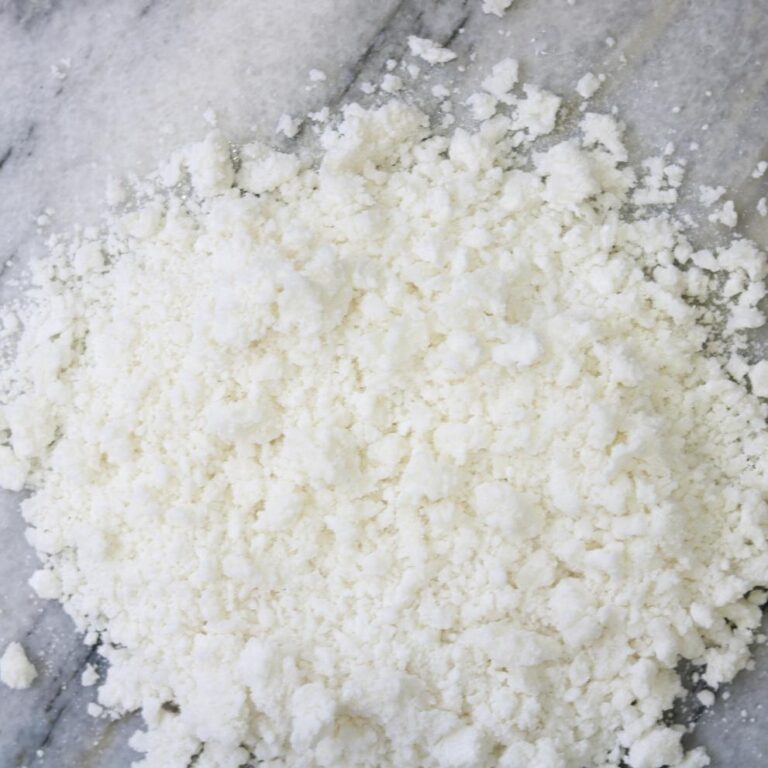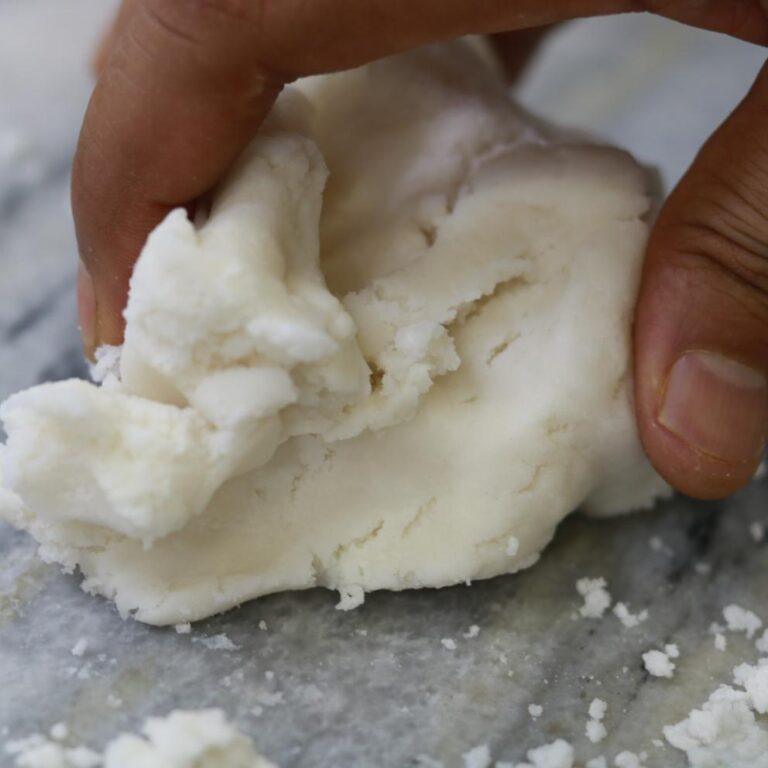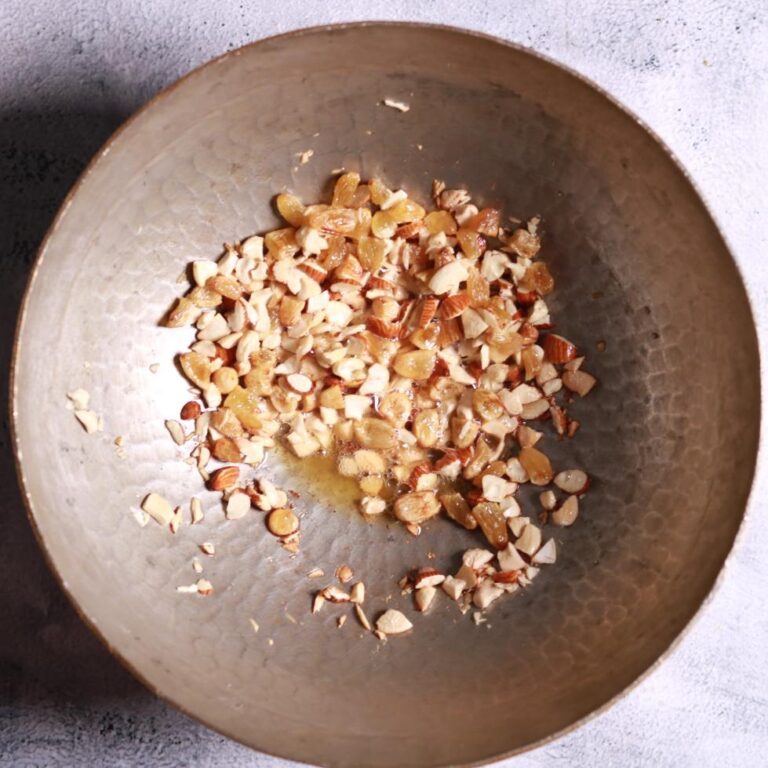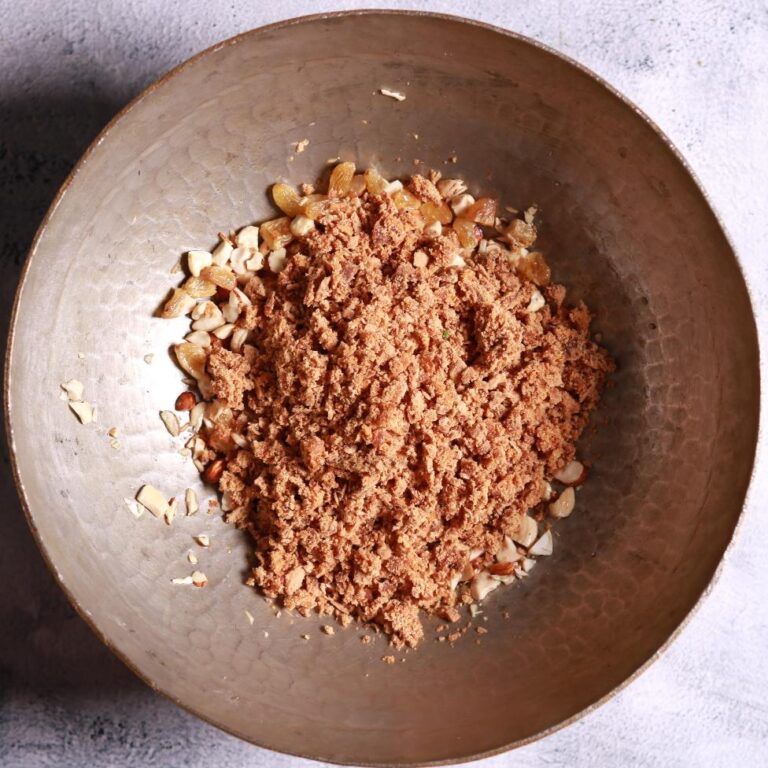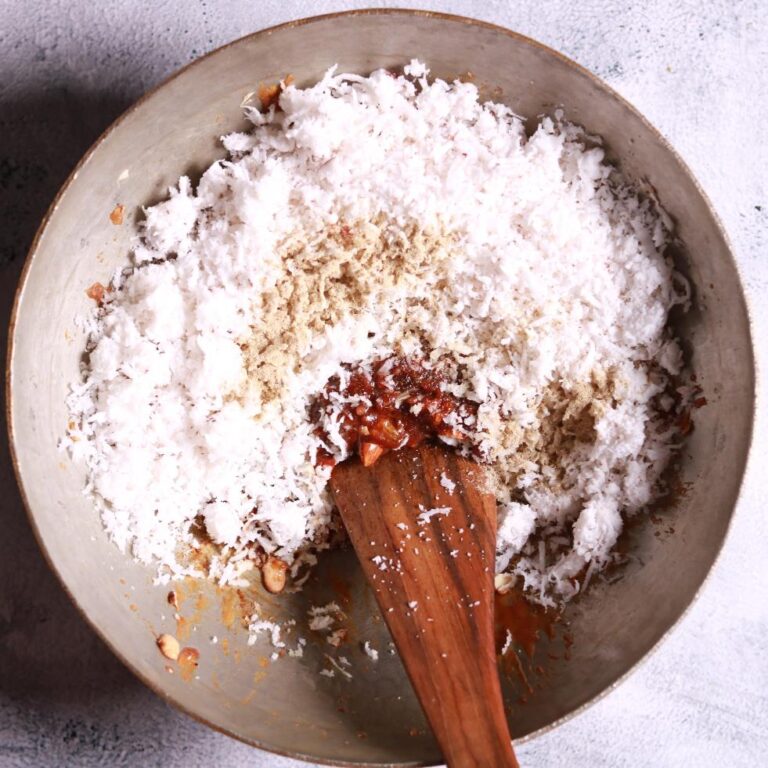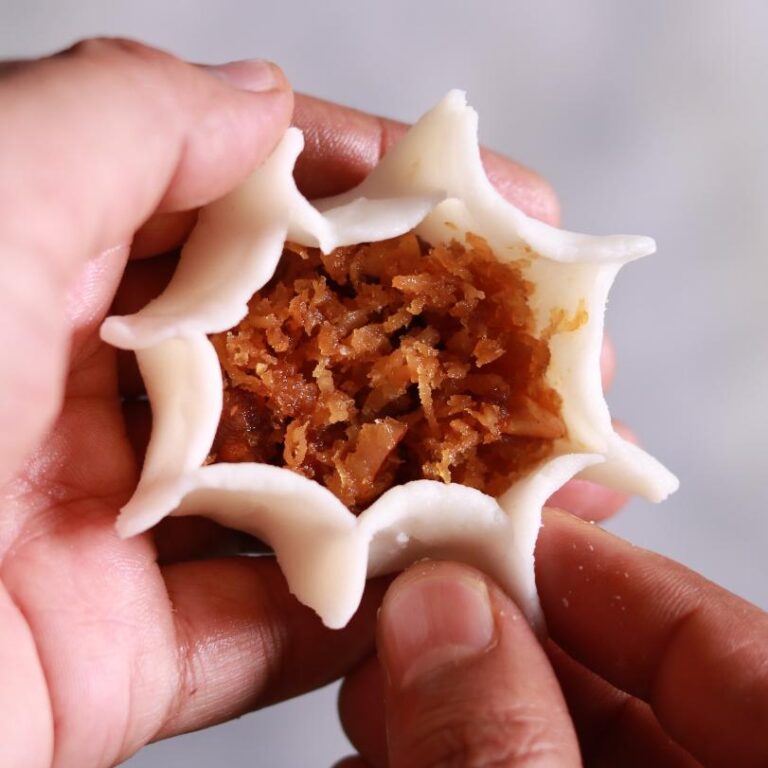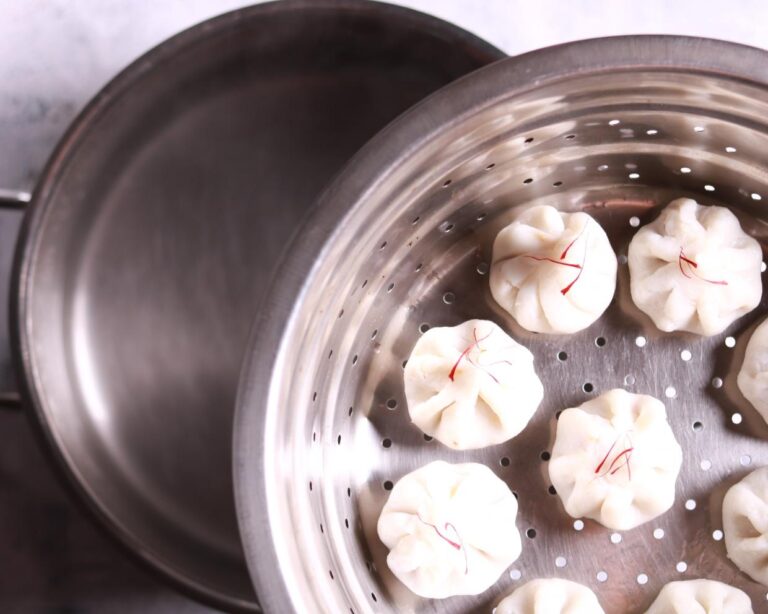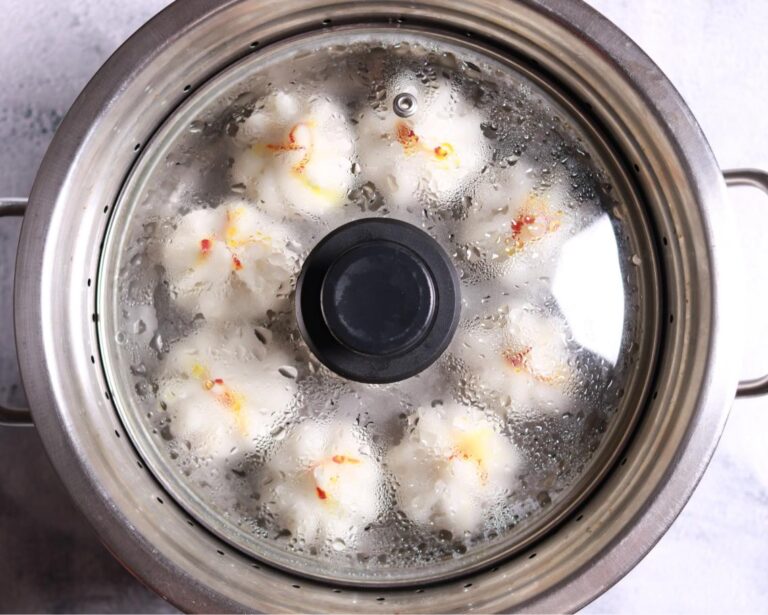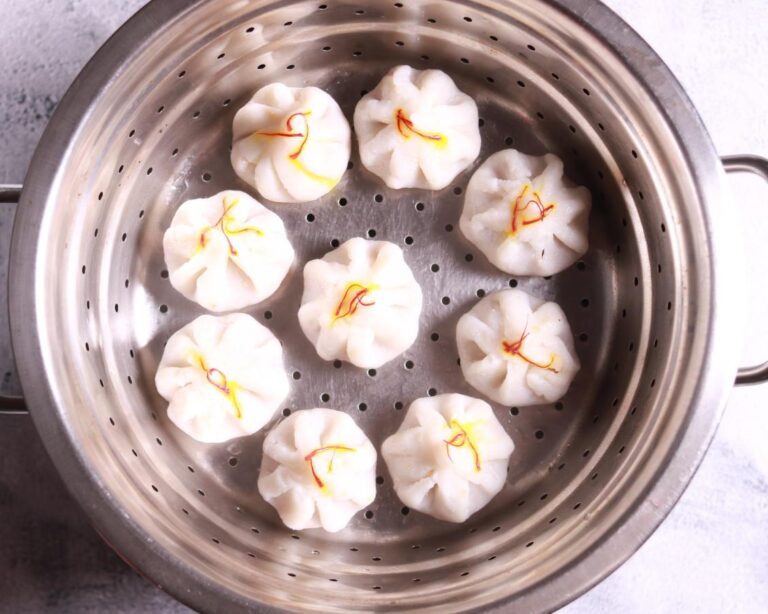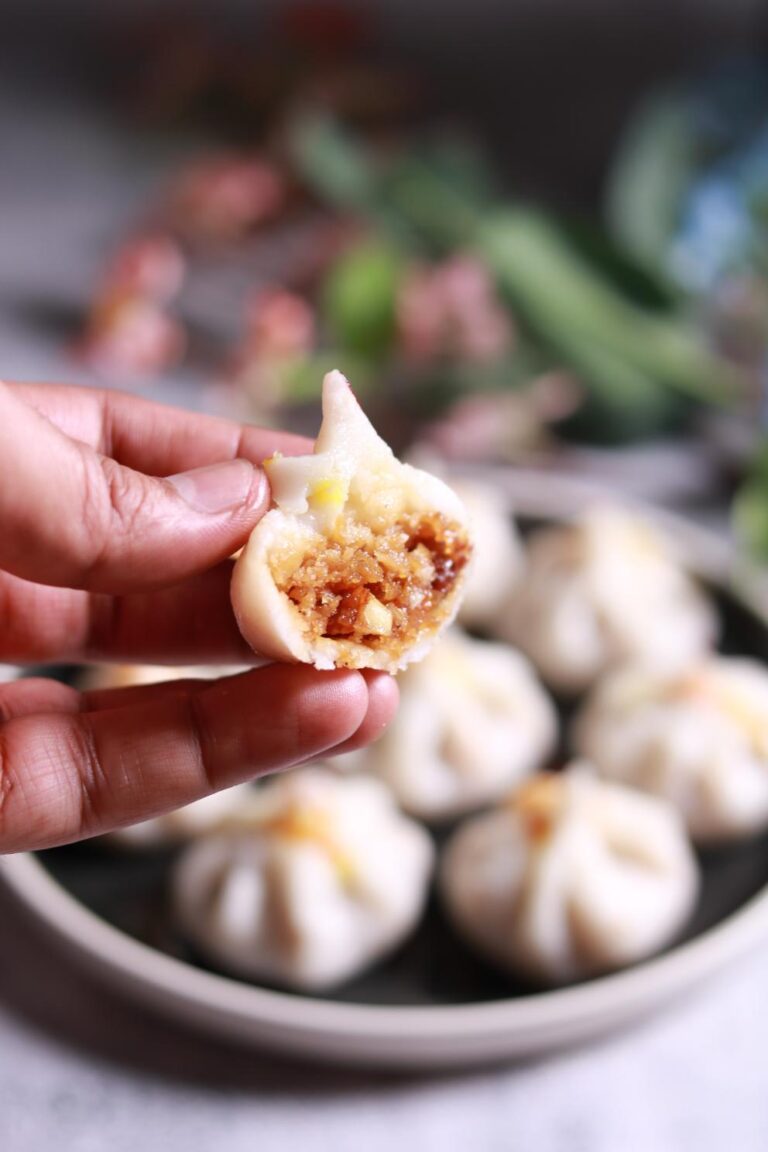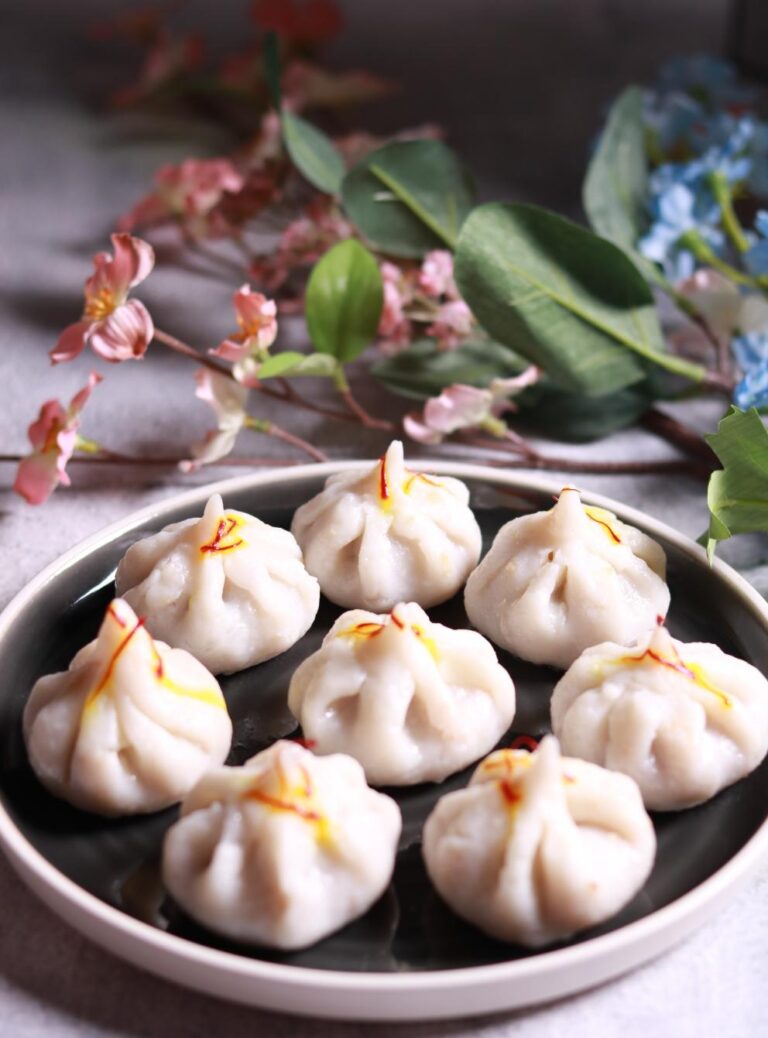There’s something absolutely magical about making ukadiche modak at home, especially when Ganesh Chaturthi is around the corner. I still remember having this in Goa at our Maharashtrian nebours when they invited me for the Ganpati Pooja, kitchen filling with the sweet aroma of coconut and jaggery, and the gentle hiss of the steamer working its magic on these delicate rice flour dumplings. If you’ve ever wondered how to recreate that same warmth and tradition in your own kitchen, you’re in for a treat!
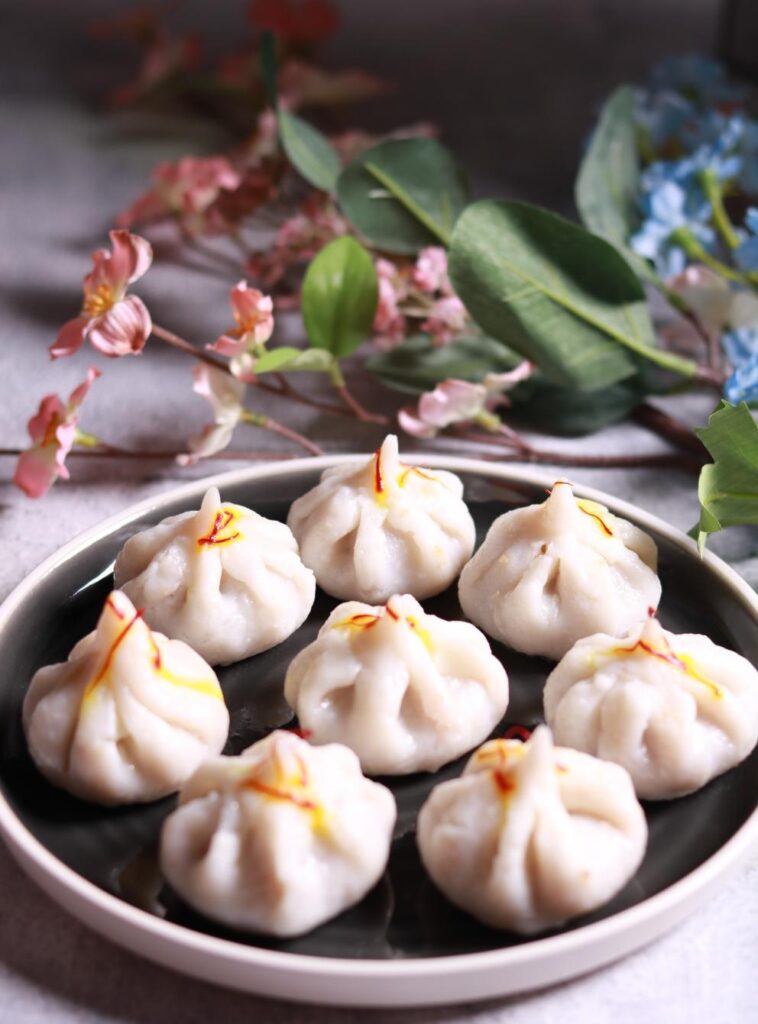
What is Ukadiche Modak?
Ukadiche modak is the classic steamed version, loved for its soft, melt-in-your-mouth texture. “Ukadiche” means “steamed” in Marathi, and these modaks are all about that delicate rice flour shell with a sweet coconut-jaggery filling. Compared to fried modaks, these are lighter and have a subtle, natural sweetness.
The magic of the ukadiche modak recipe lies in getting that perfect balance between the outer covering and the inner filling. The rice flour dough needs to be just right – not too thick that it overwhelms the filling, and not too thin that it tears when you’re shaping it. I’ve learned this the hard way after a few kitchen disasters where my modaks looked more like abstract art than traditional sweets!
More Dessert Recipes
- Gajar Ka Halwa: A Sweet Delight from North India That Needs No Introduction
- Besan Ladoo: A Festive Symphony of Sweetness and Tradition!
Traditional Importance of Ukadiche Modak and Lord Ganesh
Modak are Lord Ganesha’s absolute favourite, and honestly, once you taste a perfectly made ukadiche modak, you’ll understand why. These steamed beauties are like little parcels of joy, with their soft, translucent rice flour exterior cradling a heavenly mixture of fresh coconut and jaggery. The best part? You don’t need to be a master chef to nail this recipe. I’ve made my fair share of lopsided modaks, and trust me, they still tasted incredible!
What’s fascinating is how this recipe of modak for ganesh chaturthi has remained virtually unchanged for centuries. The technique of steaming these dumplings creates this beautiful translucent appearance that’s almost ethereal. When you bite into a perfectly made ukadiche modak, you first taste the subtle, slightly chewy rice flour exterior, followed by the burst of sweet, aromatic coconut filling.
The traditional preparation method involves creating pleats around the filling, which not only seals the modak but also gives it that distinctive shape that’s instantly recognizable. Each pleat is like a little prayer, carefully folded with devotion and love.
Ukadiche Modak Photos





Ukadiche Modak Ingredients & Their Purpose
Let’s break down what you’ll need and why:
- Rice Flour: The base for the soft, delicate shell. Fine rice flour gives you that melt-in-your-mouth texture.
- Hot Water: Helps bind the rice flour into a smooth, pliable dough.
- Jaggery: Sweetens the filling naturally and adds a caramel-like depth.
- Fresh Coconut: The heart of the filling—juicy, aromatic, and oh-so-traditional.
- Almonds, Cashews, Raisins: For crunch, richness, and a little surprise in every bite.
- Ghee: Adds flavor and keeps everything moist.
- Saffron: For a festive touch and aroma.
Each ingredient plays a part—rice flour for structure, coconut and jaggery for flavor, and ghee for that signature softness.
Modak Variations
While steamed ukadiche modak is the classic, don’t be afraid to try:
- Fried Modak: Crispy outside, soft inside.
- Rava Modak: Made with semolina for a different texture.
- Dry Fruit Modak: Packed with nuts for a rich bite.
- Chocolate Modak: A fun twist for kids!
FAQ – Ukadiche modak
How do I make soft ukadiche modak?
Knead the dough while it’s still warm, use fine rice flour, and keep everything covered with a damp cloth to prevent drying.
What’s the secret to perfect pleats?
Practice! Grease your fingers with ghee, and don’t worry if they’re not all identical.
Can I make ukadiche modak without a mould?
Absolutely! Just shape the dough into a small cup, fill, and pinch the edges together by hand.
How do I make rice flour for ukadiche modak?
Soak, dry, and finely grind rice at home for the best texture, or use store-bought fine rice flour in a pinch.
What other types of modak can I try?
Fried, rava, chana dal, dry fruit, chocolate, and even savory versions—the possibilities are endless.
How do I store leftover modak?
Keep them in an airtight container at room temperature for a day, or refrigerate for up to 2 days. Reheat by steaming gently.
Is modak gluten-free?
Yes! Traditional ukadiche modak made with rice flour is naturally gluten-free.
Why do my modaks crack?
Cracks usually mean the dough is too dry or not kneaded enough. Add a little water or milk and knead again. it.
Ingredients
For the Dough
- 1½ cups fine rice flour
- 150 ml hot water
For the Filling
- 1 cup grated jaggery
- 1 cup fresh grated coconut from 1 large coconut
- ¼ cup chopped almonds
- ¼ cup chopped cashews
- ¼ cup raisins Chopped
- 1 tablespoon ghee clarified butter
- A pinch of saffron strands optional, for steaming and garnish
Instructions
Prepare the Dough
- Heat Water: Pour 150 ml hot water into a pan and bring it to a gentle simmer.
- Mix Rice Flour: Add 1½ cups fine rice flour to the hot water. Stir immediately with a wooden spoon or whisk to combine and form a rough dough.
- Knead: Transfer the dough onto a clean, flat surface. While still warm (but not hot), knead thoroughly for 3–5 minutes. Keep wetting your hands with water as needed to prevent sticking and ensure the dough becomes smooth, soft, and lump-free.
- Check Texture: The dough should be pliable and easy to roll into balls without cracks. Cover with a damp cloth to prevent drying.
Make the Filling
- Sauté Dry Fruits: Heat 1 tablespoon ghee in a pan over medium heat. Add ¼ cup chopped almonds, ¼ cup chopped cashews, and ¼ cup raisins. Sauté for 1–2 minutes until lightly golden.
- Melt Jaggery: Add 1 cup grated jaggery to the pan. Stir until it starts to melt.
- Add Coconut: Mix in 1 cup fresh grated coconut and cook for 2–3 minutes, stirring until the mixture thickens and comes together.
- Remove from heat and let it cool.
Shape the Modak
- Divide Dough: Portion the dough into small balls, about 20 grams each.
- Flatten: Take one ball and flatten it gently with your fingers, pressing the edges thinner than the center to form a small disc.
- Add Filling: Place 2 teaspoons of the cooled filling in the center.
- Pleat and Seal: Pinch the edges of the dough disc to make pleats all around. Gather the pleats at the top and pinch to seal, forming a classic modak shape.
- Repeat: Continue with the remaining dough and filling.
- Bring all the pleats together in a conical top shape and press to seal
Steam the Modak
- Prep Steamer: Grease the base of your steamer or perforated plate with a little ghee to prevent sticking.
- Arrange Modaks: Place the shaped modaks in the steamer, leaving space between each. Optionally, sprinkle a few saffron strands on top for extra aroma and color.
- Steam: Cover and steam for 10–13 minutes on medium heat. The modaks are done when they turn slightly translucent and the dough is no longer sticky.
- Allow to cool slightly before serving.
- Serving: Traditionally, modaks are served warm, split open, and drizzled with extra ghee.
- Dish out in a plate and enjoy Modak with your family and friends!
Notes
- If you don’t have a steamer, use a rice strainer set over a deep pan with boiling water and cover tightly.
- Kneading the dough well and keeping it covered is key for smooth, crack-free modaks.
- Modaks are best enjoyed fresh and warm, making them a perfect festive treat!




